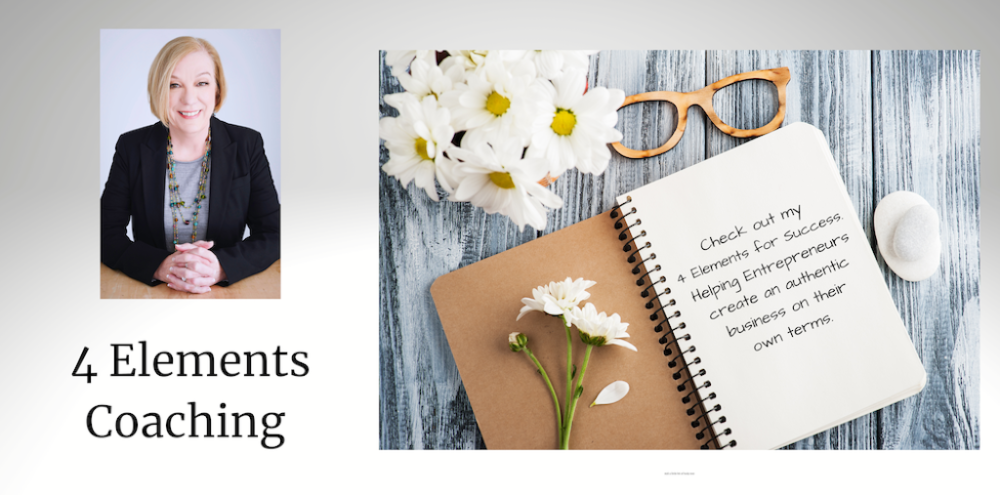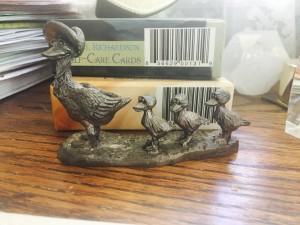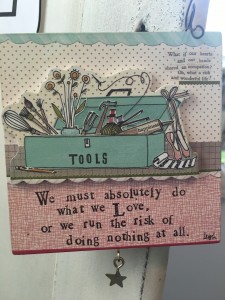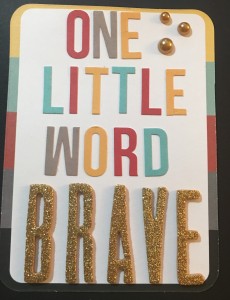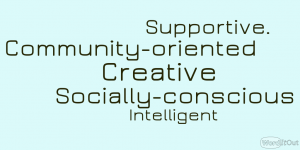I started my business full time a little over a year ago after a national nonprofit I worked for went through a restructuring. I had just gotten an exemplary yearly evaluation and a lovely bonus. Suddenly, I was offered a severance package and transitional services. It was a shock and I struggled to process what had happened while figuring out what was next.
I decided to just take the leap and do this thing that I love – coach full time. A short while later, my coach was helping me work through this new development. Not surprisingly, I expressed I was having some fear, grief, anger – all the things you would expect to feel.
My brilliant coach said, “So what’s your first next step? What are you feeling like you need to do?”
I replied, “I need to get my ducks in a row.” We then talked about what that meant. It could have included “busyness” like website redo, new business cards, systems and processes to build my capacity to serve more clients, etc. etc. Really Busy Stuff. But honestly, what it meant for me was first getting my head in the game. Aligning my mind and my business goals with what I want to do, my vision, my why, my business philosophy. My values. Everything should be synced and pulling me forward.
A few days later, I found this.
What’s weird about this little bit of pewter goodness is that in that moment, I truly didn’t remember EVER SEEING IT BEFORE. I just turned my head one day while journaling in my favorite chair and there it was, in the bookcase in front of some business books. Yes, that’s right. Business books.
I freaked out a little, I’m not going to lie. Where did this come from? How did it get here? It’s in front of my business books!!!
I began searching my brain and remembered where it came from. It belonged to my mother. Then I remembered even more – my sister gave it to her and it was especially meaningful because mom had three girls. I probably found it in a large mass of boxes brought to my home after my mom died and decided hastily to pop it into the bookcase rather than donate or give it away. I have probably seen it hundreds of times but never really took it in.
In that moment, after I had declared to my coach that I needed to get my ducks in a row, it suddenly came into my view and I got it.
Magical.
Now, it became a symbol for what I needed to do.
Fast forward to now, just a few months past my one year, full-time business anniversary, I’ve been reflecting a lot on what I’ve accomplished, what I haven’t accomplished (I spend way too much time on that one) and what I‘ve learned. Oh, the learning.
I was cleaning and decluttering my desk the other day and moved my laptop and found the little ducks again. There they were – there they always are – reminding me. A little talisman.
“Get your ducks in a row, Laurie.”
It’s an ongoing process, right? It isn’t ever really over. Sometimes my ducks walk out of line.
Like recently, when I made a decision about an opportunity that was so out of line that I almost instantly realized I needed to pull that duck back in. Every day that duck was out of line was a struggle for me. I made an impulsive decision that wasn’t aligned with my overall vision. And I knew I needed to let it go.
You see, I have this list of things that I usually go by in order to decide if something is right for me. An opportunity has to tick all these boxes. This one didn’t really tick any of them.
So, I am letting go of the regret and blaming I was doing about taking this thing on in the first place. Because I have discovered that while this detour was all wrong for me, it has taught me a lot more about myself. And has led me to discover some pretty incredible opportunities I would maybe have ignored before. For whatever reason, it was meant to be, but not for very long. I veered off to the right and it took me just a short time to get back in line. I remembered what it’s like to feel aligned. I found myself again. And when you find yourself again, it just makes you realize even more how important it is to be your complete self.
Thanks to my ducks.
So let me ask you – what’s on your list of boxes? What do you have to check in order to decide if an opportunity or relationship is right for you?
How does it feel to be connected to your complete self? How do you know when you are not in the place you need to be?
How is what you’re doing now aligning with what you want to be doing?
Is there something that feels out of range – either out of control, out of alignment or out of your ability to accomplish?
What do you need to do in order to get your ducks in a row?
What have you learned from the things that weren’t right for you?
What’s next?
If you need some help, I am always available to help you get your ducks back in a row through a coaching session. Contact me if that’s something you need right now.
